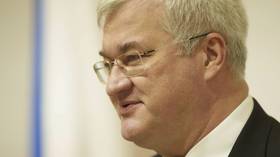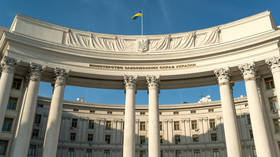BRICS bank to tap India’s bond market – report

The New Development Bank (NDB) set up by the BRICS group of major emerging economies is planning to issue its first Indian rupee bond by October, NDB Chief Operating Officer Vladimir Kazbekov has said, according to Reuters.
He reportedly told a press briefing on Monday that the lender has been under pressure to raise and lend more in local currencies due to Western sanctions against founding shareholder Russia. The bank issued its first rand bond in South Africa last week, and could consider local currency issuance in NDB members Brazil, Russia and United Arab Emirates, Kazbekov was quoted as saying.
“We're going to tap (the) Indian market – rupees – maybe by October in India,” the executive said. “Now we start thinking seriously... to use one member country’s currency to finance projects with that currency in another member. Let’s say, a project in South Africa to be financed in Chinese yuan, not with the US dollar,” he added.
Kazbekov, however, declined to give a target size for the Indian rupee bond program, according to Reuters.
The Shanghai-based NDB was established in 2014 by Brazil, Russia, India, China, and South Africa with the aim of providing funding for infrastructure and sustainable development projects. The bank formally opened for business in 2015, and was later joined by Bangladesh, the United Arab Emirates, Egypt, and Uruguay. Saudi Arabia is also in talks to become a member.
NDB Chief Financial Officer Leslie Maasdorp previously told Reuters that the bank aims to increase local currency lending from about 22% to 30% by 2026. However, he noted that there were limits to de-dollarization.
The NDB’s April investor presentation showed the financial institution has so far approved the equivalent of more than $30 billion in loans, with two-thirds being in dollars.
Analysts have suggested that US sanctions on Russia have underpinned the need to boost the NDB’s local currency fundraising and raise capital from new members, which could help it cut dependence on US capital markets.












